#organizing
Text
Black Panther Party member Kathleen Cleaver on non-violence. [source]
Non-violence is a very non-functional approach in a society that's based entirely on organized force and violence.
A country that was created in violence, land was taken in violence, a society that's perpetuating itself through violence in the ghettos, in Vietnam, in Africa.
Wherever you look, there is organized force and violence at work to maintain this society.
There is a world of difference between 20 million unarmed people, and 20 milion people organized and armed to the gills.
That's Power.
#kathleen cleaver#bpp#black panther party#black pathers#non-violence#video#communism#violence#usa#socialism#organizing
4K notes
·
View notes
Text
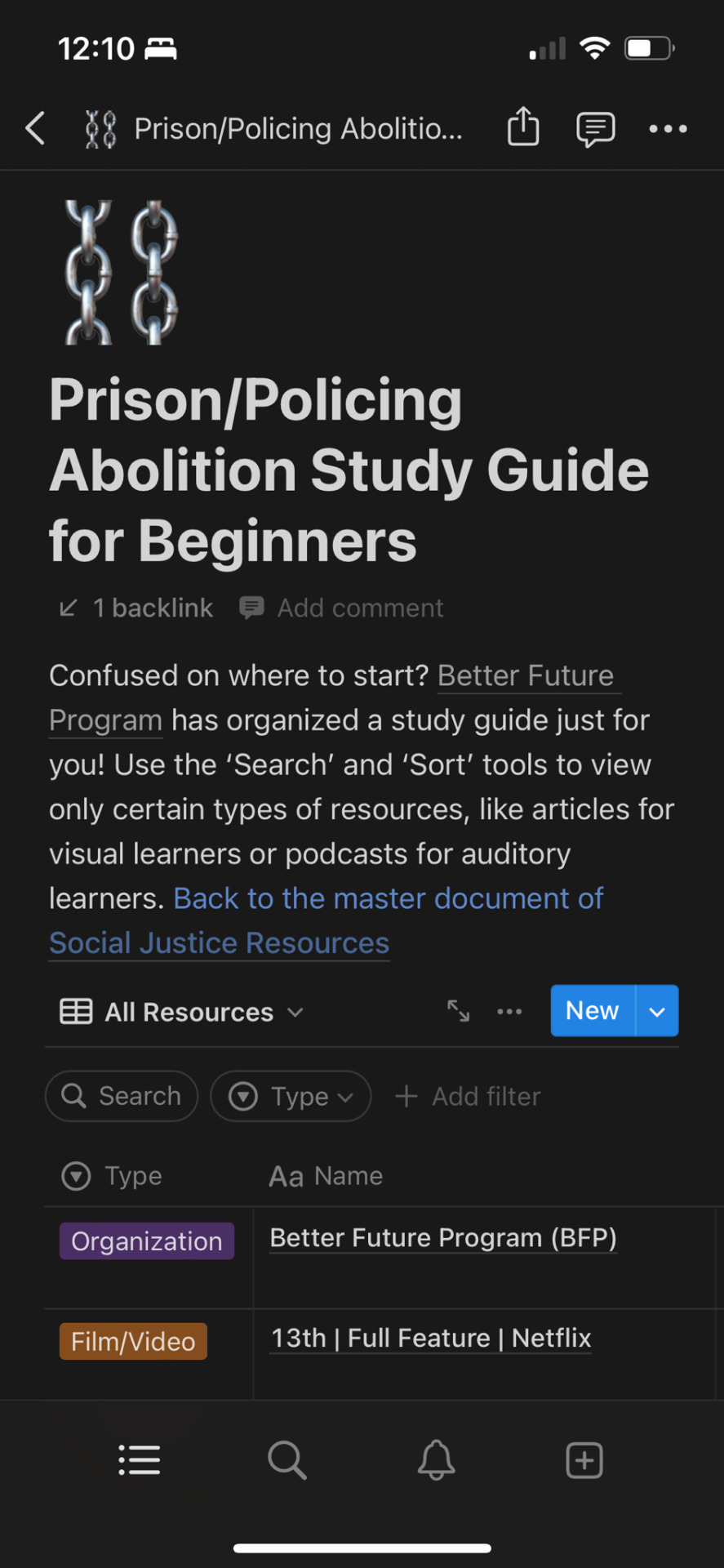
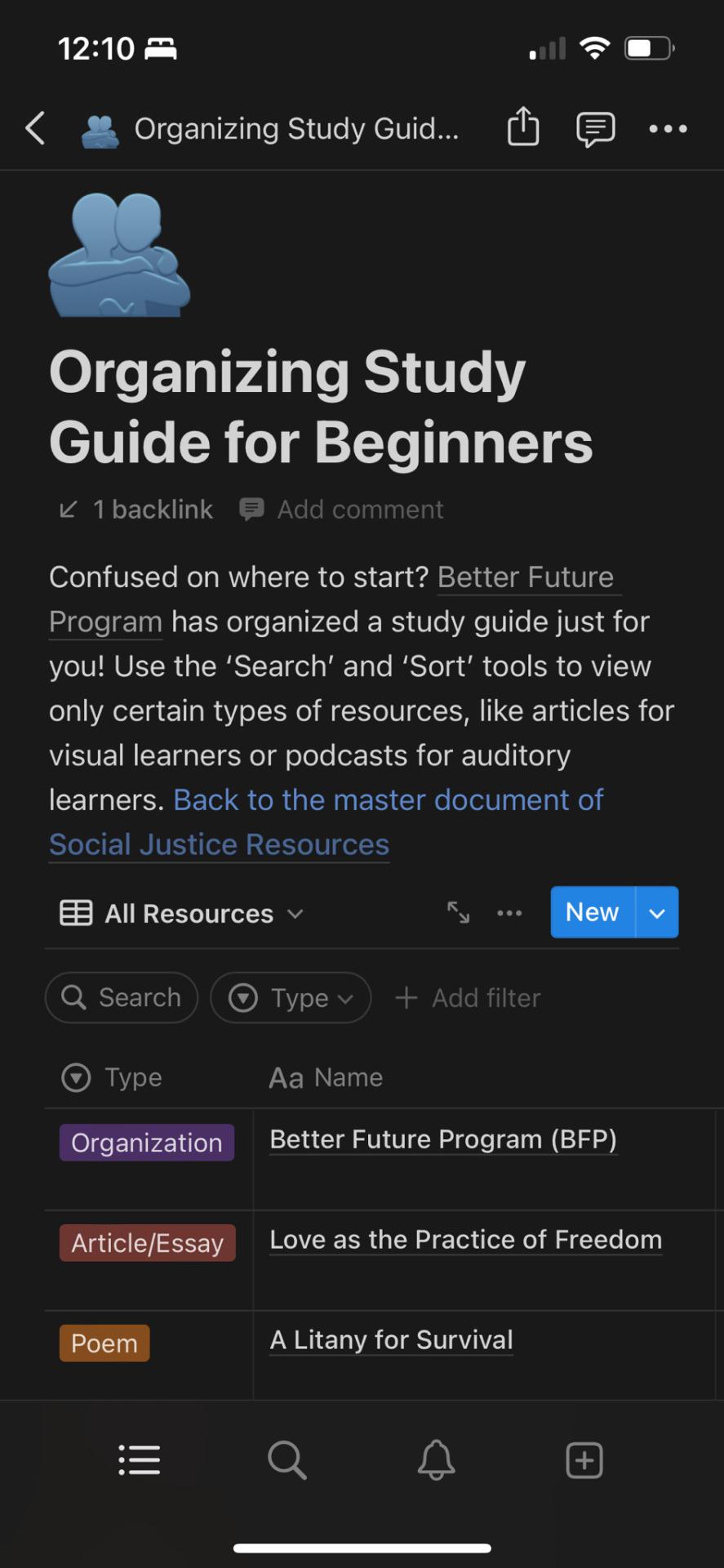

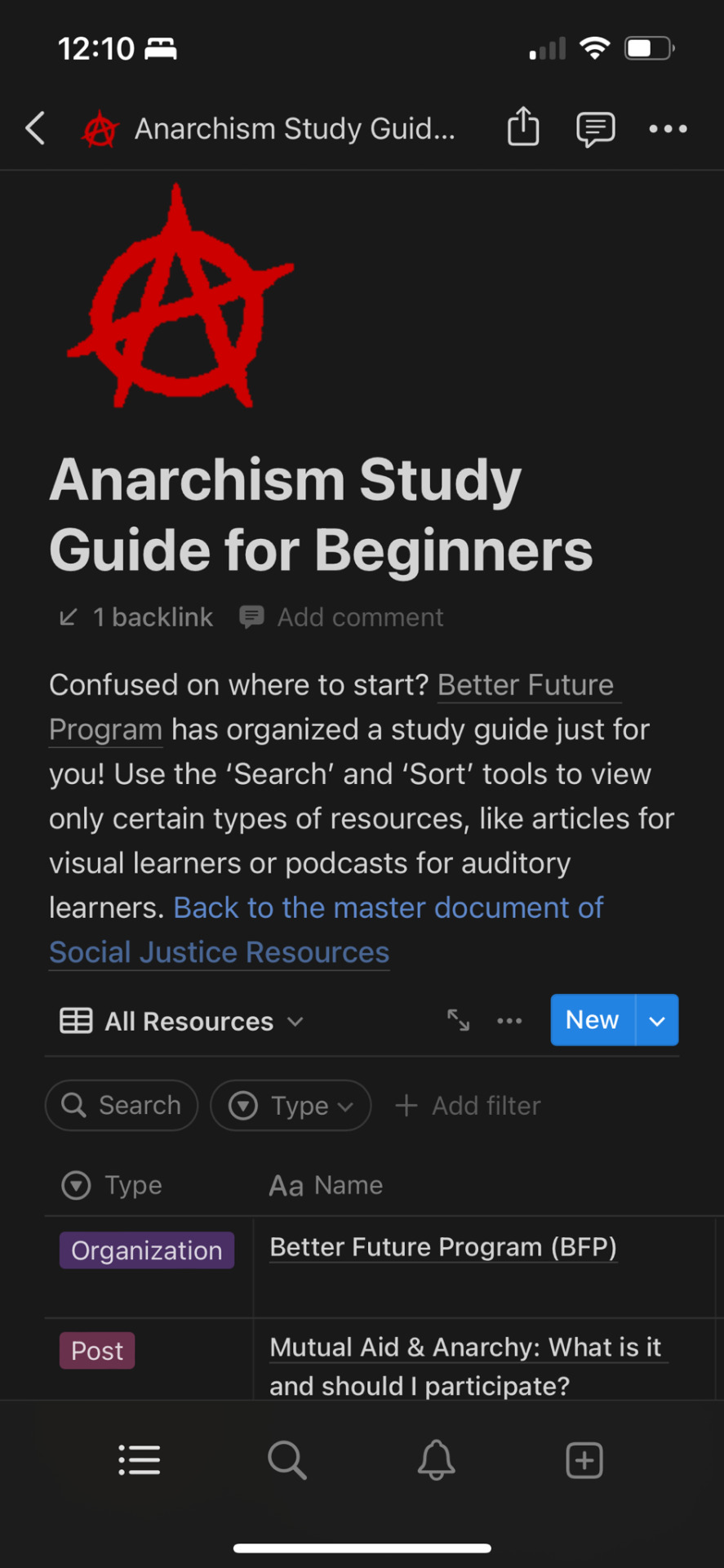
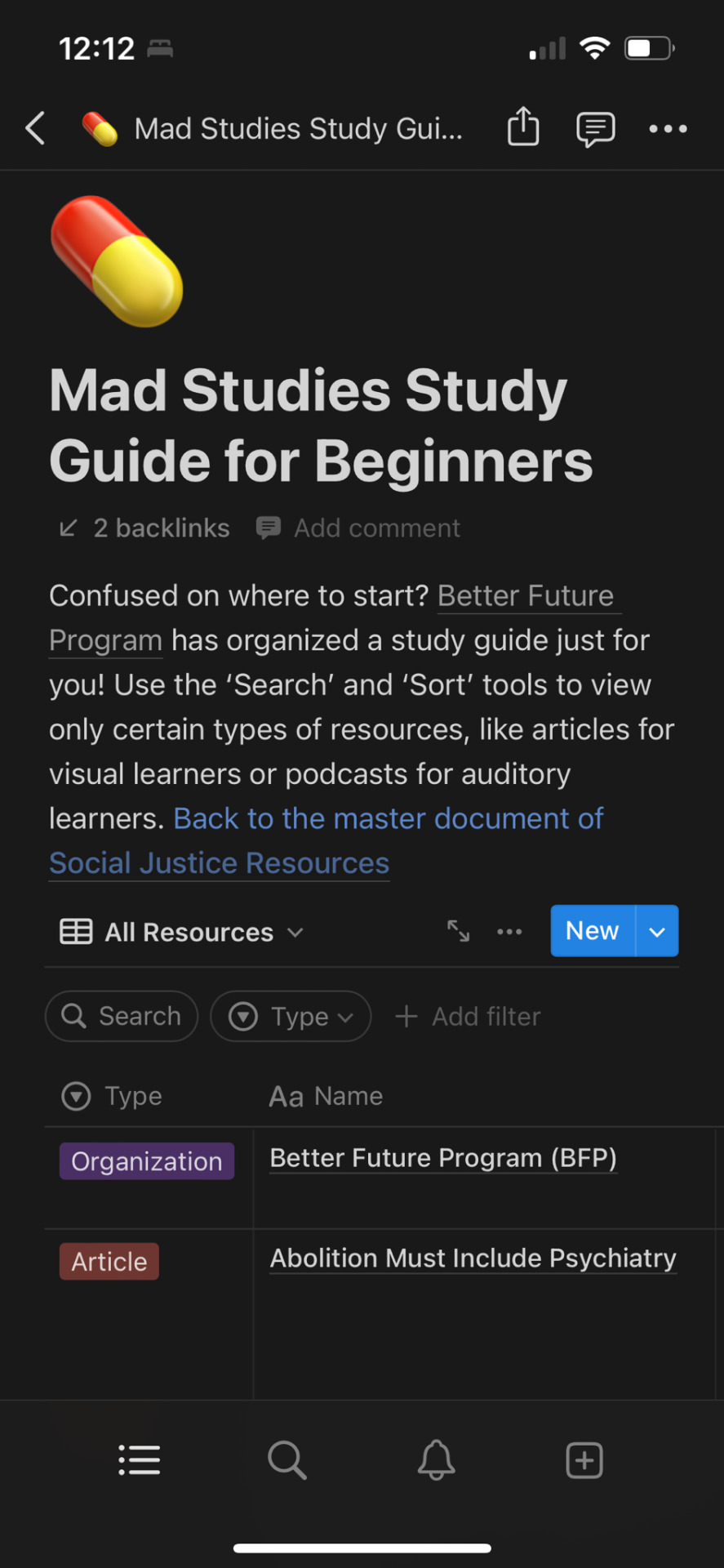
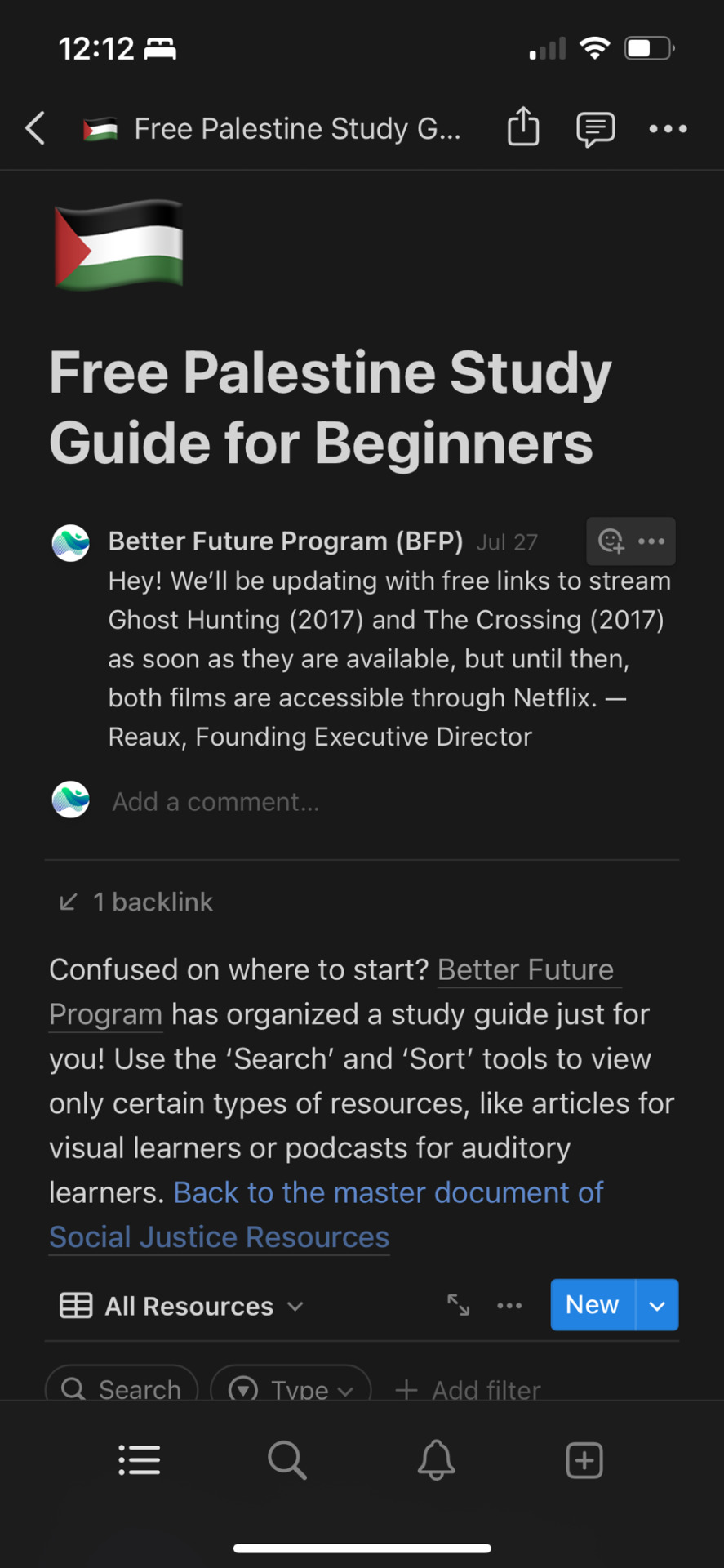
just wanted to remind everyone again not only of the 3,000+ resources offered through our Liberation Library but also of the study guides for beginners offered under each of our social justice topics!
resources can be organized by type (article, novel, podcast, video, etc.) as well as filtered and searched through. we’ve tried to make our system much more accessible than our former platform on google docs so this is such an exciting development to share with everyone.
please share to promote equitable access education!and if you’d like to volunteer with us, check out our open resources committee roles!
REBLOG THIS VERSION! image description by @bonesandblood-sunandmoon below the cut. thank you for writing one!
[Image Description: Six screenshots of beginner study guides on mobile view. The main text visible under each title reads:
Confused on where to start? Better Future Program has organized a study guide just for you! Use the ‘Search’ and ‘Sort’ tools to view only certain types of resources, like articles for visual learners or podcasts for auditory learners. Back to the master document of Social Justice Resources.
Five of the study guides have the start of a list of resources available with color coded resource types visible - Posts have a purple box, for example. Each study guide has an image. Prison/Policing Abolition has an image of chains, Organizing has two humanoid figures hugging, Classism and Anti-Capitalism has a stack of dollar bills, Anarchism has the red ‘A’ in a circle, Mad Studies has a yellow and orange capsule/pill, and Free Palestine has the flag of Palestine.
/End description.]
#reaux speaks#resources#educational equity#abolition#organizing#anti capitalism#anarchism#palestine#mad liberation#free palestine#israel
18K notes
·
View notes
Text
★ x ★ o ★ x ★ o ★ x ★ o ★ x ★ o ★ x ★ o ★ x ★
15K notes
·
View notes
Text

824 notes
·
View notes
Text
my partner today messaging me about starting a union at his job just... really reinforced in me that we are truly witnessing the rise of a very important moment in history for the future of labor in the world. we shouldn't be living the way we do and my full support is with every single person, union, and entity that is fighting for workers' rights and the security of a livable life.
#strikes#labor movements#ups strike#sag strike#wga strike#writers strike#actors guild strike#writers guild strike#actors strike#wga#ups#sag-aftra#wga strong#sag strong#teamsters#unions#unionize#labor rights#labor unions#organizing#capitalism#teachers strike#nurses strike
1K notes
·
View notes
Text
Posted on September 30, 2022 by Jay Bettencourt
In an uproarious interview with Vice published in 2013, the philosopher Slavoj Zizek describes a dynamic all too familiar to many workers today. He says, today “a typical boss no longer wants to be a boss.” He goes on to describe how, in the postmodern workplace, workers are forced to pretend their employers are their friends. You have to be overly polite, give the boss a hug, “exchange vulgarities,” and so on. The whole time both parties act like this is a relationship of friends and equals.
Management sometimes goes to absurd lengths to keep up this illusion. They will go out for after work drinks or parties with workers, engage socially during off time, invite workers to funerals and weddings, and even try to position themselves as on the side of workers, really. I cannot tell you how many times I have heard my manager say, “I’m on your side guys. I asked the owner for a wage increase but he said no and there’s nothing else I can do.”
This game wears you down fast, especially if you work a low-wage job. Management or HR expects you to maintain a good, polite mood and passion for your job while making your life materially miserable. Some even deploy a line like, “this is a very chill workplace, I try not to be too hard on you guys” as if it were a benefit like decent healthcare or ample vacation time, which are usually missing. All the while, consumer price inflation leaps ahead, wages stagnate, and working conditions steadily decline.
On the flip side, this dynamic can lead to some workers trying to overperform to impress the boss or play into favoritism to secure preferred treatment and respite. Management’s intrusion into the off-hours social lives of their workforce can also act as a form of social surveillance and conditioning on the workers – you can’t talk frankly or even safely vent about your issues if your management is there. Or, if you do, management can easily use that to bribe, isolate, or otherwise retaliate against workers. They threaten to stop being nice.
When you dispense with the niceties and pull back the curtain, the whole sham reveals itself as a classic divide-and-conquer strategy. Employers set up pay structures and work conditions that pit workers against each other in productivity competitions. But to keep workers from cutting each other’s throats, management’s “door is always open” for workers to vent to a friendly ear if they want. Management wants workers to have good social relations only with them. Snitching and ratting out are encouraged, every worker is expected to be a teacher’s pet, and the only way to get any relief from poor working conditions is to play into a manager’s favoritism.
The late Mark Fisher touches on this form of working class isolation in his hard-hitting 2009 book Capitalist Realism. Like Zizek, he hones in on the postmodern workplace and argues that this pervasive structurelessness serves to both alienate workers from each other and break our will to fight. He illustrates this with a point about discipline; during the earlier parts of the 20th Century, workers were regularly subjected to rigid discipline directly from capital, the state, or their agents. Today, workers are socially conditioned to have a “good work ethic,” practice “self-discipline,” and “hustle” to increase labor productivity instead of withstanding discipline meted out by the employer. Management hardly has to intervene.
Furthermore, Fisher argues that this state of affairs conditions working class resistance to capitalism into useless individualized channels like consumer activism. Without knowledge of a class structure (and capitalists pretending to be Just Like Us), there is no clear target to force into giving us what we want. And thus, the problems of capitalism feel as though they have no beginning and no end, intractable as the movement of the planets around the sun.
Unfortunately, Fisher does not offer us much in the way of practical advice for moving forward. Luckily, the IWW is full of battle-hardened class warriors who have learned many hard lessons over the years. In my personal experience, the “nice employer” has proved one of the toughest barriers to getting a union drive off the ground. I generally see management organizing after-work socials, happy hours, and events much more than workers themselves. In my own workplace, managers join workers for game nights and often accompany workers on outdoor activities like biking or camping. It seems they will do anything to make workers forget that the labor relationship is anything besides fundamentally economic in nature.
Management’s deep tendrils in workers social lives tends to make workers reluctant to take actions that may jeopardize their friendships. Organizers must know who is close to whom in the workplace in order to avoid this trap and prevent management from turning workplace leaders and other workers against an organizing effort early on. In our Organizer Training 101, we teach new Wobblies this, what we call Social Mapping, as one of the very first steps in a budding union drive.
In that section, trainees learn that the workplace is already organized. Only, it is organized by management with the capitalist’s interests in mind – usually for maximum labor productivity and profit extraction. I see management’s efforts to infiltrate and structure (or isolate) workers’ social lives as a deliberate way they organize the workplace. It is the organizer’s job to clearly see that and start to break management’s structure down. But organizers must know the lay of the land first if we are to make effective strides toward collective action.
Once the organizers are armed with a good understanding of the social structure and who the leaders are in the workplace, they can start building relationships and pulling workers away from management toward the nascent union with Agitation and Education, or even before that starting to “socialize the workplace;” i.e. developing relationships with coworkers outside of management’s view. This step may be increasingly necessary to counteract the growing alienation and isolation of the modern workplace and getting workers to care about each other and be a bit more involved in each other’s lives. This is the raw material that class consciousness and class conflict is built on, but it can take time and effort to grow.
While Fisher is a bit nihilistic about our prospects, Zizek goes on to say in his interview, “the first step toward liberation is to force [the boss] to really behave like a boss.” He is a bit glib, but his point is a good one. In today’s muddy waters where class organization has been suppressed almost to nil and everyone is forced to act as if they are an “independent contractor” who works for the passion of it, even drawing the lines clearly seems like a radical step. But it is a necessary one that can cut through the confusing fog of modern existence and lay the groundwork for a brighter, revolutionary future free of capitalist exploitation. As the old labor saying goes, “united we fight, divided we beg.” I, for one, am sick of begging.
We must be able to bring our coworkers together to see past management’s superficial niceness in order to fight for that future. I teach new Wobblies in Organizer Trainings that one of the most important and powerful parts of Agitation and Education is helping our coworkers slice through the propaganda to see the world for how it really is. In this case, management’s politeness comprises a small tactic in a much larger strategy on the part of Capital to delude workers and maintain labor peace. We must help our coworkers stand firm for ourselves, together, against management. We can’t be afraid of not being nice –in fact, we can use it as a weapon just like they do.
Furthermore, in many workplaces management remains the sole puppetmaster of workers’ social lives. Modern management theory seems to have recognized the fractured state of the working class and seeks to prevent our organization by relentlessly trying to mediate, filter, and prescribe workers’ social lives. I think this is a key to building an effective organizing committee; sometimes even before having one-on-ones, IWW organizers must build up some on-the-job social life to pull workers away from management. Meet up for coffee and chit-chat. Have small group events with no managers. Having a stake in each other’s lives is a crucial building block toward effective one-on-ones and toward the trust necessary for taking collective action.
Slow, steady building will pay off in the long run. Take the time to build some friendships and other long-term relationships in the workplace. Agitate and Educate coworkers effectively. Over time, we can build strong worker committees that can finally drop the curtain of politeness, make clear demands, and take collective action to materially improve all our lives. Just don’t fall for the bait.
Jay Bettencourt is an Organizer Trainer with the IWW. Read more about the history of the IWW Organizer Training program here.
Contact the IWW today if you want to start organizing at your job.
4K notes
·
View notes
Text
For those with home related New Years Resolutions:
I’ve been a disabled homemaker for 5 years now so I wanted to share the resources that have helped me take our home from complete chaos to reasonably functional and enjoyable.
If you’re not functioning...
If you’re constantly tripping over things and getting injured, eating food that makes you sick, dealing with pests in the home, and struggling to complete basic tasks like feeding, clothing, and bathing yourself, then you should start with...
KC Davis aka StruggleCare aka DomesticBlisters
TikTok
Book
Podcast
Website
I recommend KC Davis’s stuff with a big heaping dose of “keep what works and leave what doesn’t.” She’s one of the few people I’ve seen talking about compassionate care focused on maintaining a level of personal functioning rather than maintaining a home. Her stuff has been very helpful to me during some very challenging times.
I think her some of her best work is probably her videos on the 5 step tidying process, the ones on setting up bedside hygiene and food kits, and the ones on dealing with DOOM (Didn’t Organize Only Moved) boxes.
That being said she has a tendency to use neurotype as a shield for not reckoning with other dynamics in a situation (gendered, narcissism, etc) when asked for advice by viewers which can lead to this “all people with neurodivergence are good” vibe which I find off putting (especially as an autistic person). I mention it because her bleh stuff was all I was coming across and I missed out on her good stuff for a while. It’s worth picking through though.
Her book is a little better on the whole.
If you’re functioning but still very overwhelmed...
If you can complete your daily activities of living pretty regularly but you’re still losing papers you need, rebuying items you didn’t realize you had, or looking around your home at a mess that feels impossible to clean, then check out...
Dana K White aka A Slob Comes Clean
YouTube
Website
Podcast
Books
I love Dana K. White’s stuff. Honestly, I recommend her to every level on this list but I think she probably shines brightest in this category.
Her 5 step decluttering process is pure fucking gold. It’s a decluttering process that doesn’t rely on feelings at all - really helpful for those with trauma or alexthymia generally. She has multiple videos explaining it and even more where you can watch her go step by step with someone over the course of an hour and make a huge dent in some very overwhelming mess. Its the process I’ve used to go through over 50 moving boxes to declutter so we could fit in this much smaller space we moved to in April.
Her day to day cleaning advice is also excellent. Her concept of dishes math has really helped me make decisions about what chores to focus on when I’m low energy. Her 14 Days to Opening Your Front Door series is amazing if you’re having to host for a given occasion but your home is a wreck.
If you’re not painfully overwhelmed by your stuff but there’s still a lot of friction in your home...
If your stuff doesn’t overwhelm you but your home still doesn’t feel that good to be in, you’re still not finding things when you need to or it’s taking you a long time to find them, you create homes for things but they look terrible or they never seem to stick, then you’d love...
Cassandra Aarssen aka Clutterbug
YouTube
Books
Website
Podcast
Clutterbug types were kind of a game changer for me. It’s what really opened my eyes to why the systems that worked for me did not work for my partner. She is a Bee - lots of small categories that are all very visible - and I am a ladybug - big bucket categories that aren’t visible. When I reorganized our space according to the compromise between our types, Butterfly - big categories and very visible - all of a sudden the systems just worked so much better. There were many fewer fights sparked by things not getting put away or not being able to find things. So I really recommend her videos on the different types and examples of each.
Quick word of warning, she does have regular videos about diet and exercise that I personally find pretty triggering to my disordered eating habits so I’m not subscribed to her and just check her channels every now and then so it’s easier to skip over videos where that might be a topic she talks about.
Cliff Tan aka Dear Modern
TikTok
YouTube
Website
Book
Cliff Tan’s work is the most recent of these resources that I’ve come across but holy shit I cannot recommend it enough.
Because my parents didn’t originally intend on my partner using the room she wound up using, there’s simply not space to keep some of the furniture and items in there anywhere else. Meaning she just kind of has to keep a fair bit of junk in there. But after watching (read: binging) the Dear Modern YouTube channel and seeing him completely change spaces by moving furniture around, I redid my partners room over the course of about 2 hours and it’s a completely different room. Way more comfortable and she’s already mentioned she’s getting much better sleep.
So I really really recommend his stuff. Sometimes what you really need isn’t new stuff but just rearranging what you already have.
If you’re pretty content with your home but want to streamline the process of caring for it...
If your home is pretty functional but regular tidying, deep cleaning, and maintenance tasks specifically keep falling through the cracks, then you might like...
FlyLady System
Website
The Secret Slob - YouTube
Diane in Denmark - YouTube
There are lots of systems out there for house keeping but I’ve yet to try or see one that seems to do better than FlyLady for me. Since with my illness my energy varies wildly, I don’t necessarily do things when her system recommends but I do them according to the priority her system ascribes to them as I’m able.
FlyLady is a notoriously convoluted website so I really recommend learning from a secondhand source. The Secret Slob and Diane in Denmark are my favorites.
Maintenance Lists
This Old House
There a lots of maintenance lists out there and honestly finding one and doing what you can is better than nothing. I personally like the ones from This Old House because they’re broken up into annual, seasonal, monthly, and some weekly tasks - which are essentially priority categories, similar to FlyLady. I’ve linked the winter one here but there are many others to pick through depending on what you want to work on.
Bonus: Paper Clutter
My System
Link
This is what I’ve arrived at after years of experimentation. It’s an amalgam of a few different ideas from different systems in one place. I keep mind on my fridge but put yours where ever you’re dumping paper anyways. If you’re in a room or live in a car/backpack - I have ideas on how to organize it for those in this post too.
Sunday Basket
YouTube Video
The Minimal Mom’s Video
She’s in Her Apron Video
Need something a little more robust? The Sunday Basket is probably be best version of a paper (and other stuff) system I’ve seen. Got something that needs dealt with? Chuck it in the Sunday Basket. The creator also has videos on long term paper storage ideas if that’s something you need as well. But her videos usually run an hour long so I recommend starting with either the Minimal Mom’s video or She’s in Her Apron’s video.
Bonus: Digital Clutter
PARA System/Building a Second Brain by Tiago Forte
YouTube Channel
Website
Book
Essential Video
The branding on this system can be very productivity tech wonk which is off putting to me but when I finally started hearing what was at the core of it and applying it - my digital life was changed. I’ve linked my absolute favorite video he’s done here. Ignore the bit about it being the last in the series, most of us are already using some note app and if you like it you can always go back and watch the rest. But just applying what’s in that video to your digital systems will make things easier to find.
Hope this helps someone out there!
#homemaking#housekeeping#getting your shit together#organizing#adulting#life skills#home#decluttering#studyblr
2K notes
·
View notes
Text
making an effective planner⋆.ೃ࿔*:・✍🏽

i've answered the question of how to make an effective planner as an inbox response but i thought i'd put it into a post so that then if u guys needed it y'all could access it easier ✨
buying the right planner ; for physical planners i prefer to buy planners that include lots of space for additional writing instead of just the date. yk those ones? make sure to get a binder/planner that u think is cute and has space for a to-do list, monthly overview kinda calendar etc.
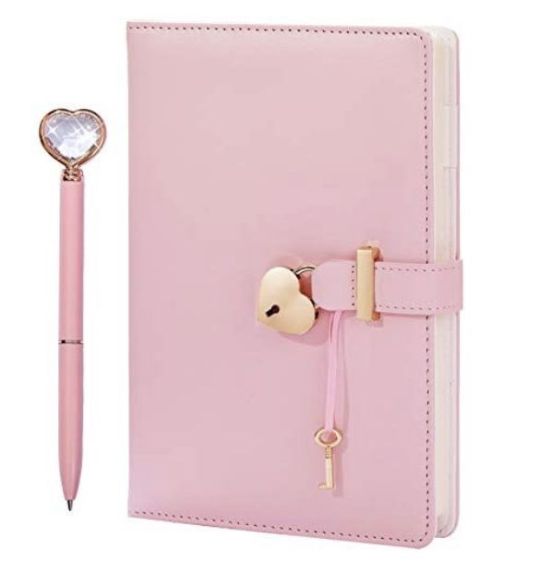

if ur working from scratch with a binder you can buy a cute binder or decorate it with stickers and things of the sort. for the paper i highly recommend graph paper bcuz its neater in my opinion but whatever floats ur boat.
on that paper make space for the following ;
monthly calendar (with a little column for monthly goals)
weekly agenda (you can create a new agenda every week if u have the time/energy to do so) but if u dont then you can try...
writing the days of the week and beneath them were gonna try and replicate the concept of a toggle list. its basically like writing "monday" and there are little sub-tasks written below, like what u have to do on that day.
so how i'd do it, is i'd write the day of the week as a header/title. then beneath it i'd use little sticky notes (bonus points if u color coordinate) and then i'd write my tasks on the sticky notes. that way, when a new week comes i dont have to create a whole new agenda, i can simply remove the sticky notes but still keep the structured agenda if that makes sense.
reflection space (to reflect on the productivity of ur month/week/day and what u can improve on and what u can keep doing)
my thing is, if u wanna do a physical planner, whether its an already made planner or a binder, just make sure that u have SPACE for things like that.
#advice#it girl#becoming that girl#self care#self love#that girl#it girl energy#honeytonedhottie⭐️#organization#organizing#productivity#agendas#productivity tips#dream girl#dream girl tips#dream life#time management#planner#hyper femininity#girl blogging#girl blog#resources💬🎀
285 notes
·
View notes
Note
Hello, Mr. Badge, I seem to remember that you once posted about your processes and systems for staying organized in life with Excel spreadsheets etc. I’ve been struggling a lot with depression and executive dysfunction issues and don’t want it to impact my work.
Do you use the same processes at work? I get overwhelmed with the amount of documentation we have and the exceptions to the rules in our processes.
I'm so sorry you're struggling! It's really rough, and the more complicated the task feels, the more fraught it seems, the harder it is to even get a start. I feel that hard.
As for organizing work like my home life....well, it's sort of the same. I don't make a strong distinction between life and work simply because a lot of what needs organizing in my life IS my work, so it's tough to talk about them separately.
For example, I use Google Tasks to build a to-do list each day, but that to-do list starts with "stuff I'll do before work" then "shower" then all my work stuff, then "evening" and then all the stuff to do after work, ending with "7pm chores" (because I have a lot of stuff to do right around 7pm, which I need to post about elsewhere). Then the stuff I've pushed off to next day is below that, and that just bumps up the next morning. What's important isn't really how I keep the list, but that I keep it in a way that is constantly accessible, and I've trained myself to 1. put everything on it, even stuff like "grocery shop" and 2. check it whenever I feel lost. I don't find google calendars very helpful, however, so while work makes me use one for meetings, everything else goes on a calendar I made in Google Sheets that I'm just super used to by now.
It sounds like you're having a fairly specific issue, which may not even be related to your mental health (though assuredly the mental health issues aren't helping). If you have a lot of confusing documentation and exceptions in the stuff you do at work, that can be legit stressful even for someone who isn't dealing with other stuff, so I just want you to know that this may not only be a You Problem. My problem is usually the opposite, in that I'm often the first person doing something, or the only person who's done it in a while, so there's no documentation at all. But when I do have documentation I often will simply rewrite it.
After all, just because you have a handbook doesn't mean you have to use it. You can copy it over into another document and make yourself a step-by-step guide and/or a checklist. Like, I do our holiday cards every year, and my "HOLIDAY CARDS" document says "Here's the first thing you do, here's the second, do this before going past that, check this before asking for that". Literally at one point the document says "Stop. Before you go any further, do this step. Even if you don't understand why, do this step" because in the past I've disregarded that instruction ("Why on earth would I do it this way?") and lived to regret it.
Making the guide really, really sucks. Often it will take me four or five passes at a project before my guide is comprehensive (this is my fifth year doing the holiday card project and the document still has some steps missing at the end). But once you have it, it's invaluable, and often in the past I've found other people want my guides because they're fairly clear and precise about what needs doing when. For example, you might say, "Open the file and move column B to in front of column A. NOTE: THERE IS ONE EXCEPTION, THIS IS THE EXCEPTION." Or "Once you've saved the file, save a second copy to your backup folder so you can go back to it if you delete something you shouldn't. Stop and check: is this file from before or after October? If after, remember, you have to also rename it." If you find that there's a mistake you make frequently, figure out what would stop you from making it and add that in.
(We had a guy at work whose last name was VERY long and Italian, and so when I was working phones he got a special entry in the directory document I made -- the first line was all his directory info and the second line was just the phonetic pronunciation of his last name. He found out, which I had never intended him to do, and lost his shit laughing. "No wonder you're the only one who gets it right!")
So my recommendation to you is to create your own handbook, your own templates, and your own way of doing things and just slip that back into the system you have at work. Draw a diagram by hand if you need a flow chart. My approach to all my organizational issues has always been "What would make me do this correctly / prevent me from doing that thing wrong / remind me what to do / make it easier for me to start".
I think of this nowadays as the "Take the cupboard doors off" school of organizing, because to really make full use of my kitchen in a way that I liked, I had to take some of the cupboard doors off. It looks messier and kind of cheap, but it's actually a much more organized system now, and who's in my kitchen other than me?
208 notes
·
View notes
Text


My Melody Pen Stand and Storage Case (Calm Series)
#sanrio#sanriocore#sanrio aesthetic#hello kitty aesthetic#cute pngs#transparent#sanrio core#makeup#pen holder#desk organization#organizing#my melody#onegai my melody#sanrio characters#png#pngs#pink aesthetic#baby pink#pink png#hello kitty#source linked
500 notes
·
View notes
Text
Unions Can Still Strike—Don't Let the Supreme Court Tell You Otherwise

The U.S. Supreme Court’s decision in Glacier Northwest v. Teamsters Local 174 is outrageous—valuing property over workers’ rights. But it could have been much worse.
Unions still have the right to strike. Employers still can’t generally sue unions in state court for losses caused by strikes. But the decision does open the door to whittling away those rights more in the future. [Emphasis added.]
The practical impact of the Court’s decision is that employers will be suing unions more often for alleged property damage caused by strikes—and that therefore unions (and their attorneys) are likely to be more cautious.
But the Court did not do what many had feared it would do in this case: overrule longstanding precedent that employers generally cannot sue unions in state court over activities—like strikes—covered by the National Labor Relations Act.
Read more from the article:
552 notes
·
View notes
Text
heyo!! with the presidential election coming up pls go to this website to tell your representatives to pass/support the national popular vote bill so that candidates like claudia de la cruz have a chance and so elections are no longer rigged by the electoral college!!
we need change!!! pls sign this and pls organize and protest and call if you can (because that will pressure them way more than just an email) and just spread the word and do anything you can to help abolish the current system!!
ALSO PLS VOTE IN LOCAL ELECTIONS THEY HELP SO MUCH!!!
#important#election 2024#claudia de la cruz#activist#leftism#leftist#politics#ig#electoral college#pls rb#advocacy#flowers are blooming in antarctica.#we need change#protest#we need to start organizing#protesting#organizing
186 notes
·
View notes
Video
pointing out the hypocrisy is a waste of time. Show up. Show up to your local city meetings. show up to your local school board and library board meetings. show up to your local mutual aide groups. show up to your local DSA and IWW groups.
690 notes
·
View notes
Text
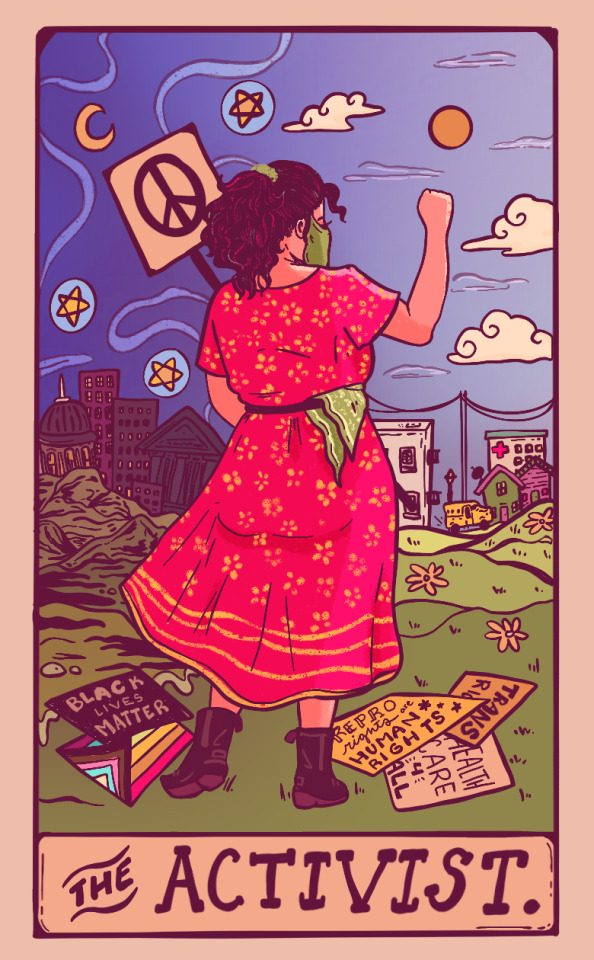
your tarot card…
🪄✨🌟⭐️✨
Digital illustration of a tarot card. There’s an activist pointed towards her computer on the right. She is wearing a red dress and holding a peace sign with her other fist raised. Behind her to the left is sludge. There are protest signs on the ground and text reads, ‘the activist’
#art#feminism#feminist#activism#activist#protest#protest signs#organizing#community organizing#tarot#tarot cards#tarot witch#daily tarot#witchcore#witch community
365 notes
·
View notes
Text
I want to underscore that the creator of the audio has stated multiple times in their other videos (and in the full length video this audio is from), that she recognizes that voting/demonstrating/calling your reps DOES indeed have an impact, however, they go on to explain that the impact is simply NOT ENOUGH at this point; that by itself, protest is ineffective without making other disruptions to the system. I highly encourage you to check out his other videos. She has a lot of great content that breaks things down.
You can find their videos at this link:
#this was my first foray into animation#and oof it may look simple but it didn’t feel like it#it was a learning process#and something for me to put all my feelings into#take the power back#power to the people#free palestine#free Gaza#liberation#organizing#buy nothing#trans rights#blm#unionize#education#Yemen#abolish ice#abolish prisons#abolish capitalism#abolish the police
173 notes
·
View notes
Text
𝐋𝐨𝐯𝐞𝐒𝐢𝐜𝐤!𝐀𝐭𝐡𝐥𝐞𝐭𝐞 𝐌��𝐬𝐭𝐞𝐫𝐥𝐢𝐬𝐭‧₊˚౨ৎ


𝐘𝐨𝐮 𝐀𝐧𝐝 𝐈 (SFW)
💗!Nonny sent in some random brainrot, and I only did the proper thing, ramble on for 5,000 words or so)))
𝐘𝐚𝐧𝐝𝐞𝐫𝐞 𝐀𝐥𝐩𝐡𝐚𝐛𝐞𝐭 (NSFW ish)
It's in the name, sweetheart. I practically just answer different prompts from the classic yandere alphabet!!
𝐓𝐨𝐨 𝐇𝐨𝐭 𝐓𝐨 𝐇𝐚𝐧𝐝𝐞𝐥 (SFW)
My basic thoughts on LoveSick!Athlete. This was made when I was still developing his character. Pretty random tho.
𝐈 𝐃𝐨𝐧'𝐭 𝐆𝐞𝐭 𝐉𝐞𝐚𝐥𝐨𝐮𝐬 (SFW)
Just some simple jealousy headcanons for our fav athlete.
𝐇𝐨𝐰 𝐓𝐡𝐞𝐲 𝐒𝐡𝐨𝐰 𝐓𝐡𝐞𝐢𝐫 𝐀𝐟𝐟𝐞𝐜𝐭𝐢𝐨𝐧 (SFW, but a little suggestive ig)
Headcanons on how LoveSick!Athlete would treat his darling and show his love to them (or you, depending on how you think of it)
(Other LoveSick!Characters are included).
𝐇𝐮𝐬𝐛𝐚𝐧𝐝 𝐌𝐚𝐭𝐞𝐫𝐢𝐚𝐥 (NSFW parts)
Practically, I ramble on and on about LoveSick!Athlete's childhood and how good he is with kids.
(requested by 💗!Nonny)
𝐅𝐨𝐫𝐞𝐯𝐞𝐫 𝐋𝐨𝐲𝐚𝐥 (SFW)
How does LoveSick!Athlete maintain his womanizer facade while in a relationship with reader? Well, listen to me ramble and eventually answer this question.
(requested by anon)
𝐏𝐫𝐞𝐭𝐭𝐲 𝐅𝐚𝐜𝐞, 𝐃𝐢𝐫𝐭𝐲 𝐌𝐨𝐮𝐭𝐡 (SFW)
How LoveSick!Athlete would react to one of his teammates liking reader, but I kind of went off-topic. Not proofread whatsoever. (second part to Husband Material request)
(requested by 💗!Nonny)
𝐀 𝐋𝐢𝐭𝐭𝐥𝐞 𝐔𝐧𝐡𝐢𝐧𝐠𝐞𝐝 (SFW)
Where I go into more detail about how LoveSick!Athlete would punish reader for whatever reason.
(requested by 🐏!Nonny)
𝐇𝐨𝐰 𝐖𝐨𝐮𝐥𝐝 𝐓𝐡𝐞𝐲 𝐑𝐞𝐚𝐜𝐭 𝐭𝐨 𝐑𝐞𝐚𝐝𝐞𝐫 𝐍𝐨𝐭 𝐖𝐚𝐧𝐭𝐢𝐧𝐠 𝐊𝐢𝐝𝐬? (SFW)
It's in the name: How LoveSick!Athlete would react if reader didn't want children (Other LoveSick!Characters included + requested by 💗!Nonny)
𝐃𝐨𝐧'𝐭 𝐑𝐞𝐬𝐢𝐬𝐭 𝐢𝐭 (NSFWish)
How LoveSick!Athlete would react to a darling who's resistant toward having children and would resort to physical violence.
(LoveSick!Knight included + requested by 💗!Nonny)
𝐃𝐨 𝐓𝐡𝐞𝐲 𝐖𝐚𝐧𝐭 𝐊𝐢𝐝𝐬? (SFW)
um, it's in the title. Just some headcanons on whether or not LoveSick!Athlete would want children or not (he would).
(other LoveSick!Characters included)

#𝙡𝙤𝙫𝙚𝙨𝙞𝙘𝙠!𝙖𝙩𝙝𝙡𝙚𝙩𝙚#masterlist#lovesick#yandere oc#yandere oc x you#obsessive love#bad writing#x reader#drabbles#organizing#yandere male#yandere x reader#obsessed x reader#𝙡𝙤𝙫𝙚𝙨𝙞𝙘𝙠!𝙘𝙝𝙖𝙧𝙖𝙘𝙩𝙚𝙧𝙨#character masterlist
84 notes
·
View notes